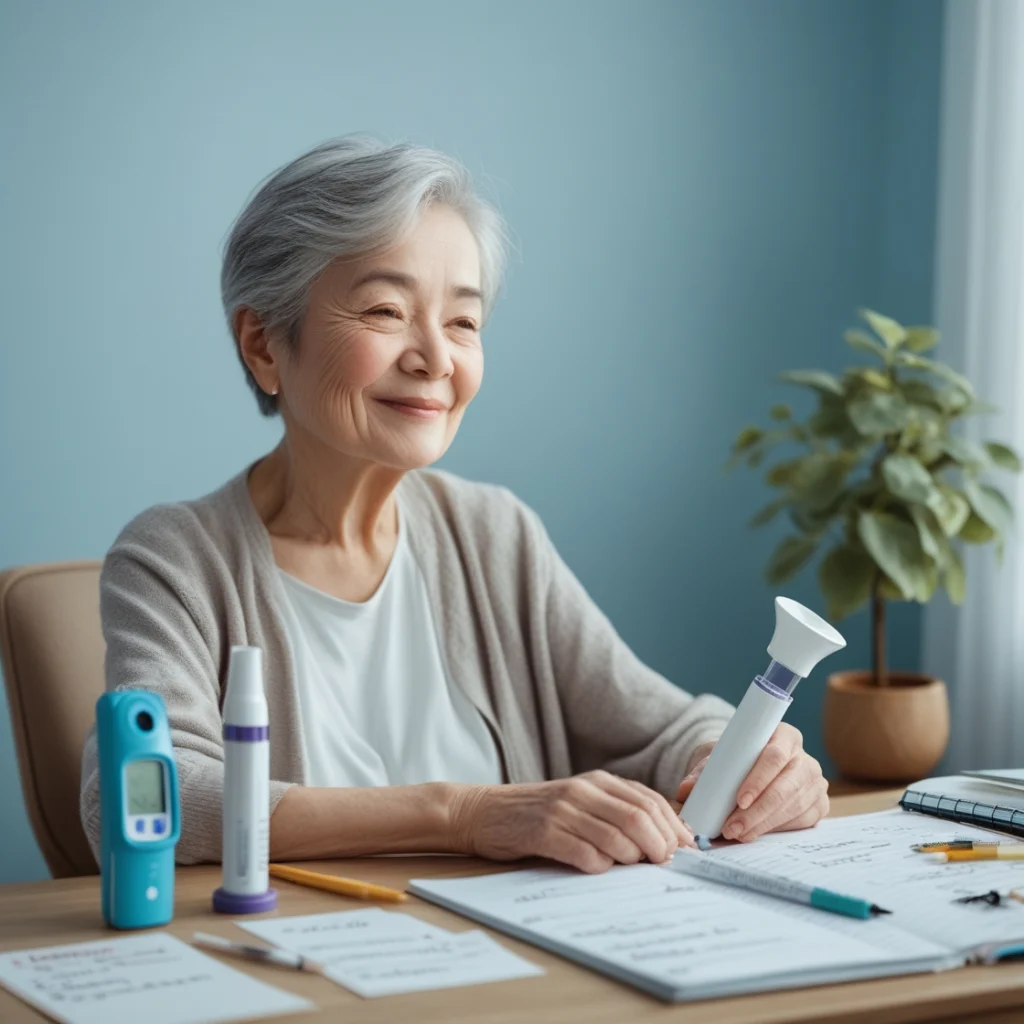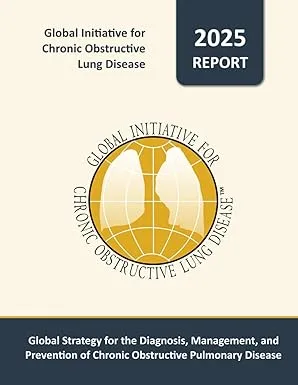Chronic obstructive pulmonary disease
Chronic Obstructive Pulmonary Disease (COPD) is a term used to describe chronic lung diseases including emphysema, and chronic bronchitis. This disease is characterized by breathlessness. Some people with COPD also experience tiredness and chronic cough with or without mucus.
COPD is (currently) an incurable disease, but with the right diagnosis and treatment, there are many things you can do to breathe better and enjoy life and live for many years.
Global Strategy for the Diagnosis, Management and Prevention of Chronic Obstructive Pulmonary Disease
Through the development of evidence-based strategy documents for management of both COPD, and events such as the annual World COPD Day and the yearly GOLD International COPD Conference, GOLD is working to improve the lives of people with COPD in every corner of the globe.
How do I know if I have COPD?
Common symptoms of COPD include feeling short of breath while resting or when doing physical activity, cough, wheezing, fatigue, and/or mucus production that does not go away. If you have these symptoms, you should talk to your healthcare provider. Some people with early COPD may not be aware of symptoms. Testing should be done in people who are at risk for COPD. Your healthcare provider may have you do a breathing test (lung function test) called spirometry. Spirometry measures your ability to exhale and can detect whether your airways are narrowed. (See ATS Patient Information Series fact sheets on Pulmonary Function Testing).
How does a healthcare provider know a person has COPD?
Healthcare providers diagnose COPD based upon the combination of symptoms and test results. The single most important test to determine if a person has COPD is spirometry. Changes of COPD can also be seen on a chest x-ray or a chest CT scan. Once your healthcare provider has determined that you have COPD, he or she may order other tests to assess how well you are breathing with sleep and with exercise. This includes looking at your oxygen saturation levels.
How is COPD treated?
The first and most important treatment of COPD in smokers is to stop smoking. Medications and other therapies are available to help treat nicotine addiction and to help you stop smoking. For more help on stopping smoking, see the ATS Patient information Series fact sheets on Tobacco. Medications can also be prescribed to help relieve symptoms of COPD and to prevent symptom flares (called exacerbations) that can lead to further loss of lung function. Some general classes of medications include those that aim to widen the airways (bronchodilators), reduce swelling in the airways (antiinflammatory drugs, such as steroids), and/or treat infections (antibiotics). Other than antibiotics, most COPD medications should be taken every day, usually for life. Stay as healthy as possible. Avoid contact with those who are sick, wash hands often, get a yearly flu vaccine, and get pneumonia and COVID-19 vaccines when recommended by your healthcare provider. In some people, COPD can also cause the oxygen level in the blood to be low. If this occurs, a person can be given supplemental oxygen. Breathlessness should not be confused with low oxygen levels. People with COPD can experience shortness of breath or have a hard time breathing even if they have good oxygen levels. Therefore, breathlessness is not always a good guide for whether you need to use oxygen (See ATS Patient Information Series fact sheet on Breathlessness). Proper nutrition and staying in good physical shape are also important not just for symptom relief but also for your quality of life. Pulmonary rehabilitation programs offer supervised exercise and education for those with breathing problems and should be a part of a comprehensive treatment plan for anyone with COPD. Community support groups can provide education and opportunities for COPD patients and their caregivers to share their experience with other people with COPD and families.

(See ATS Patient Information Series fact sheet on Pulmonary Rehabilitation). In some cases, surgical procedures such as lung volume reduction surgery or lung transplantation may be options to consider (See ATS Patient Information Series fact sheets on Surgery for COPD and Lung Transplantation).
Will COPD ever go away?
The term chronic, in chronic obstructive pulmonary disease, means that it lasts for a long time. Symptoms of COPD sometimes improve when a person stops smoking, takes medication regularly, and/or attends pulmonary rehabilitation. However, the lungs are still damaged and can never fully return to normal. Therefore, COPD is a lifelong condition. Breathlessness and fatigue may never go away entirely, but people can learn to manage their condition and continue to lead a fulfilling life.
Why is self-management important?
When you have a long-term condition, you might sometimes feel you don’t have control over your health, your life, and what happens to you.
Self-managing your condition – with support from others – helps to give you control. It’s important to know all about your condition, your symptoms, your medication, and how to cope with flare-ups. It also makes your day-to-day life easier and could reduce the risk of needing to go into hospital.
How to get the most out of your COPD self-management plan
Self-management works best when supported by others. Share your plan with your GP, respiratory nurse, or other health care professionals involved in your care. It may also help to discuss your plan with your family, carers, and friends, so they can support you too.
The first half of our self-management plan explains what COPD is, how you can manage it well, and what to do if you have a flare-up of your symptoms. The second half has blank forms for you to complete to help you monitor your condition and progress.

Use our self-management plan in the way that works best for you – daily, weekly, or monthly. It doesn’t need to be completed overnight!
What are the signs of a flare-up?
It’s normal for your COPD symptoms to vary a bit from day to day. But if your symptoms are worse for two or more days, this is a flare-up (an acute exacerbation).
Signs of a flare-up include:
- feeling a lot more breathless than usual
- you are coughing more
- you are producing more phlegm (mucus)
- your phlegm (mucus) changes colour or gets stickier.
Flare-ups are often triggered by an infection but there may be no apparent trigger. If you get a cold, watch out for any changes in your chest symptoms.
What should I do if I think I’m having a flare-up?
If you think you’re having a flare-up, follow your action plan as agreed with your healthcare professional.
Your flare-up plan may include a rescue pack of drugs (antibiotics or steroid tablets or both) that you keep at home. Make sure you know when:
- to take steroid tablets – it’s important not to use these too frequently, because of potential long-term side effects.
- to take antibiotics – this will usually be when you are producing more phlegm (mucus) than usual or it has changed colour, as well as being more breathless for some time despite taking reliever medication.
Your doctor or nurse should discuss this with you at every review appointment.
Make sure you let your doctor or nurse know:
- if you take your rescue pack medication
- if things don’t improve within two days of starting the rescue pack.
If your breathlessness gets worse, but you have no fever and your phlegm is normal for you, the first step is usually to use your reliever inhaler more. Make sure you know what to do – such as increasing the dose or changing how you take your bronchodilator medicine – to help with your symptoms. Many milder flare-ups will respond to this.
If your symptoms pass and don’t develop into a flare-up, remember to tell your healthcare professional what happened.
Current guidance says people with COPD using three or more rescue packs in a year should be offered a review of their condition to check everything has been done to reduce the risk of flare-ups.
Where will I be treated if I have a flare-up?
Most people can be treated at home if they have a flare-up, but you may need to go to hospital depending on how severe your symptoms are. If you use the ambulance service, make sure to say you have COPD, so you get the right oxygen treatment.
Allow yourself some time to recover after a flare-up. Some people find it can take several weeks or even months to feel completely back to normal.
Hospital at home schemes
Most people with COPD who have a flare-up do not need to be admitted to hospital and can stay at home. But in some areas of the country, people who would be admitted to hospital elsewhere, can also be treated at home. These local hospital at home schemes provide medication and visits by a specialist team. This means you can recover at home where you might feel more comfortable and can be more active when you feel ready. If you would prefer to be treated at home, speak to your doctor or nurse.
What if I have multiple flare-ups?
If you have more than three flare-ups in one year that require your rescue drugs, ask your GP or nurse for a review.
It may be a good idea to ask for samples of your phlegm (mucus) to be analysed to see if you have an unusual or resistant infection. These can include pseudomonas and atypical mycobacterial infections, such as non-tuberculous mycobacterial infection (NTM).
Your doctor may order a scan of your chest to see if there is an area of damaged lung that makes you more likely to get infections.
If you are more likely to get these infections, make sure you act very quickly when you have a flare-up and be aware your usual rescue drugs may not be effective. Sometimes people who have frequent bacterial chest infections benefit from taking regular antibiotics. This is usually started by specialist teams.






